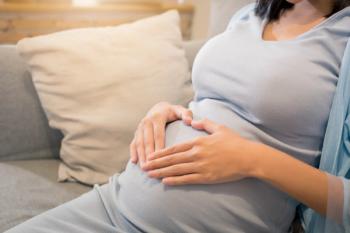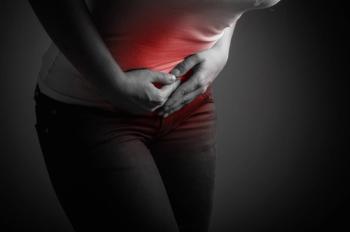
Heavy drinking linked to higher unwanted pregnancy risk
Women who drink heavily are 50% more likely to become pregnant, even when actively trying to avoid it, according to a new study.
The odds of becoming pregnant are increased 50% among women with a high desire to avoid pregnancy who drink heavily, according to a recent study by the Society for the Study of Addiction.1
In comparison, the data found no increase in pregnancy risk among those with cannabis use. Notably, the desire to avoid pregnancy was higher in women with frequent alcohol consumption or cannabis use vs moderate or none. Heavy drinking was reported in more than half of pregnant women with a desire to avoid pregnancy. 1
“First, nonpregnant women who drink heavily appear, on average, to have a higher desire to avoid pregnancy than those who drink moderately or not at all,” said Sarah Raifman, PhD, MSc, lead author from the University of California, San Francisco. “Second, drinking heavily as opposed to moderately or not at all appears to put those who most want to avoid pregnancy at higher risk.”1
Tracking substance use and drinking habits
The exploratory analysis was conducted to determine preferences about pregnancy based on drinking status and cannabis use.2 Participants were recruited from 23 primary and reproductive health centers in southeastern California, Arizona, West Texas, New Mexico, and Nevada between March 2019 and October 2022.
Women aged 15 to 34 years without current pregnancy, sterilization, or intrauterine device use residing in or bordering a study state were included in the analysis. The survey period lasted for 13.5 months to give participants time to identify and report pregnancies.2
Baseline questions obtained information about substance use, sociodemographics, pregnancy preferences, and incident pregnancy. Changes in the latter 2 factors were captured in surveys conducted at 3, 6, 9, and 12 months.2
Pregnancy preferences
Pregnancy preferences were determined through a 14-item Desire to Avoid Pregnancy (DAP) scale discussing cognitive preferences, affective feelings, and practical consequences related to pregnancy. Scores ranged from 0 to 4, with higher avoidance desires indicated by greater scores.2
Low DAP was defined as 1.5 or lower, mid-range as 1.5 to 2.5, and high as over 2.5. When reporting suspected pregnancies during follow-up, participants also reported why and when they suspected the pregnancy.2
Alcohol consumption variables included never, once, 2 to 4 times, 2 to 3 times per week, and 4 or more times per week. Last month cannabis and other drug use were also reported. Covariates included age, race and ethnicity, parity, religiosity, and current schooling.2
Substance use and DAP scores
There were 1968 participants included in the final analysis, 95% of whom remained in the sample at 3 months, 93% at 6 months, 91% at 9 months, and 87% at 1 year. Of participants, 59% were Hispanic, 21% White, 8% Black, and 13% other races and ethnicities. Patients were aged a median 25 years at enrollment.2
Heavy drinking at baseline was reported in 40% of participants, any cannabis use in 31%, and any other drug use in 3%. Heavy drinking was significantly associated with frequent drinking among the cohort. A mean DAP score of 2.5 was reported in participants with heavy drinking at baseline vs 2.3 in those without heavy drinking.2
In the adjusted mixed effects analysis, a significant link was found between heavy drinking and time-varying DAP score. Similarly, daily or almost daily cannabis use was linked to an increased desire to avoid pregnancy, but no association was reported for other drug use.2
Alcohol and cannabis use impact on pregnancy risk
An incident pregnancy was reported in 282 participants, 46% of whom had a low DAP score before pregnancy and 25% a high score. High-DAP pregnancies were more frequently reported among participants with heavy drinking at baseline, at 54% vs 39% among those with low-DAP pregnancies.2
An adjusted hazard ratio (aHR) of 1.51 was reported for pregnancy among patients with vs without heavy drinking with the highest desire to avoid pregnancy, indicating a higher risk. In comparison, the aHR was 0.62 among those with midrange desire to avoid pregnancy and 1.17 among those open to pregnancy.2
For cannabis use, a link was found between less than daily use and incident pregnancy among those most open to pregnancy vs never use, with an aHR of 1.58. However, associations were not reported for daily or almost daily use vs never use, nor in patients with mid-range or high DAP scores.2
Clinical implications and recommendations
Overall, the data highlighted an association between alcohol use and pregnancy based on pregnancy preference. Investigators concluded that the highest risk is in patients with heavy drinking who want to avoid pregnancy.2
“Given the potentially life-altering effects of fetal alcohol spectrum disorders…and the fact that the risk of FASD increases with the amount and duration of the mother’s drinking, it's important for doctors and clinicians to support women who drink heavily to stop drinking as soon as they suspect an unintentional pregnancy,” said Raifman.1
References
- Heavy drinking raises the risk of undesired pregnancy; cannabis use does not. Society for the Study of Addiction. July 31, 2025. Accessed August 5, 2025. https://www.eurekalert.org/news-releases/1092349
- Raifman S, Roberts SCM, Rocca CH. Alcohol and drug use and attainment of pregnancy preferences in the southwestern United States: a longitudinal cohort study. Addiction. Published online July 30, 2025. doi:10.1111/add.70135
Newsletter
Get the latest clinical updates, case studies, and expert commentary in obstetric and gynecologic care. Sign up now to stay informed.











